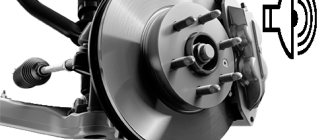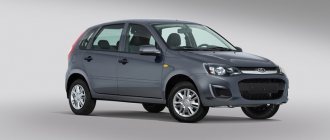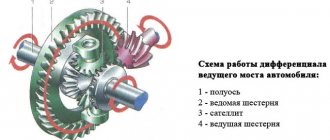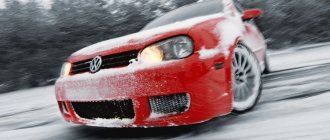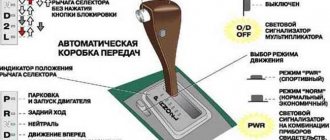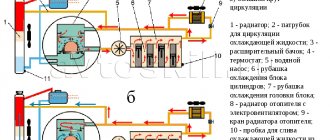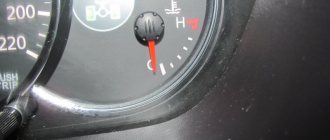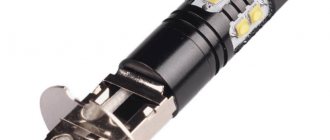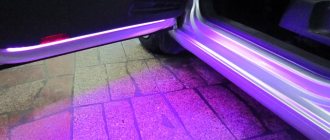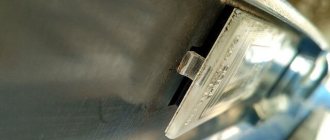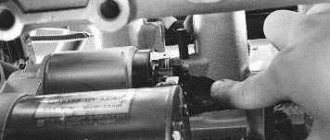The correct distance is a guarantee of safety
Everyone knows that the braking distance on a slippery highway increases several times, but not everyone wants to remember this. In winter, when driving on the road, you must keep your distance.
The distance to the car moving ahead should be 2 times greater than in the summer. Only at such a distance can you safely brake without causing harm to the stopped or moving car in front.
You also need to be extremely careful in your attitude towards pedestrians crossing the road or walking along the side of the road.
Standard 16" tire options
The standard tire size for Niva is quite unique - 18575R16 - narrow and tall tires of 16 diameter. Not many manufacturers produce tires of this size, and even fewer produce narrow and tall winter tires of 16 diameter.
Which winter tires to prefer for the Niva - studded or not - each car owner decides for himself (on our website there is an article to help: Velcro or studs).
Since the Niva is primarily an SUV, studded tires are most often selected for it.
Among studded tires, one of the most popular are Voltyre VLI-5 and VLI-10. Tires of this particular brand are installed at the factory, so this option is the most inexpensive. But not the most optimal, since the driving characteristics of these tires leave much to be desired.
For standard sizes you can also find winter studded tires of such models as:
- Amtel K182A (Seven Hills)
- Cordiant Business
- Gislaved NordFrost Van
- Nokian Nordman C
- Nokian Hakkapeliita C Cargo
- Michelin Agilis X-ice North
- Good Year Cargo Ultra Grip
Among the non-studded options for the standard Niva size you can find tires of the following models:
- KShZ K182A (Amtel Seven Hills)
- Kama Euro LCV
- Rosava LTW
- Viatti Vettore Brina
- Belshina Bravado
- Tigar Cargo Speed
- Yokohama W.Drive
- Hankook Winter Ipike
- Continental VanContact
- Nokian WRC3
However, it is worth mentioning that except for the domestic Amtel, Cordiant and Kama, as well as the Ukrainian Rosava and Belarusian Belshina, all other tires will be quite expensive, so most Niva owners will not consider them as winter tires for their car. Because instead of these expensive 16-radius tires, you can install 15-radius tires, which will cost significantly less.
Moderate speed
You should not drive too hard on a snowy road. It is better to move slowly and smoothly.
On a slippery road, you should not drive at a speed of more than 40-50 km/h, because otherwise there is a high risk of skidding or the car becomes uncontrollable when braking.
Tram tracks also need to be crossed slowly to prevent the car from skidding.
Drivers of cars with a gearbox in icy conditions keep their foot over the brake, and not over the gas pedal, as in the summer. In an unusual situation, the foot instinctively falls on the pedal.
What do the manufacturer's specialists recommend?
It is important to remember that it is strictly forbidden to add lubricants of the most common API GL-5 standard to the Chevrolet Niva gearbox. On the one hand, it is better in terms of performance: it performs well at high speeds, high loads and temperatures. On the other hand, it contains sulfur-phosphorus extreme pressure additives, which in high concentrations can disrupt the operation of the Niva manual transmission synchronizers. Most car enthusiasts recommend using transmission fluids of the GL-5 standard for addition to axles and gearboxes.
The transfer case and gearbox should be filled with oil that meets API GL4 or GL4/GL5 quality standards and SAE viscosity 75W-90, 80W-85, 80W-90. Transmission fluid according to API GL5 or GL4/GL5 is intended for gearboxes, front and rear axles. It is better not to use oil with GL4 standard.
When changing the oil in a VAZ 21214 gearbox, special attention should be paid to the recommendations of the automaker. The company recommends filling the Niva transmission with the following lubricants:
- "NOVOIL T" (80W-90; GL-5);
- "OMSCOIL SUPER T" (85W-90; GL-5);
- "REXOL T HYPOID" (80W-90, 85W-90; GL-5);
- "VELS TRANS" (85W-90; GL-5);
- "VELSTM" (80W-90, 85W-90; GL-5);
- "UFALYUB UNITRANS" (85W-90; GL-5);
- "NORSI" (80W-90, 85W-90; GL-5);
- "LUKOIL TM-5 or VOLNEZT-1" (85W-90; GL-5);
- "LUKOIL TM-5" (80W-90.85W-90; GL-5);
- "ANGROL T" (80W-90, 85W-90; GL-5);
- "SPECTROL FORWARD" (80W-90; GL-5);
- "SPECTROL CRUISE" (85W-90; GL-5);
- "SAMOIL 4402" (85W-90; type GL-5);
- "SAMOIL 4404" (85W-90; GL-5);
- "SAMOIL 4405" (85W-90; GL-5);
- "AGIP ROTRA MP" (80W-90; GL-5);
- "AGIP ROTRA MP DB" (85W-90; GL-5);
- "MP GEAR LUBE-LS"
For example, if we talk about what kind of oil to pour into the Niva-21214 (injector), then in this case the opinions of car owners may differ. Therefore, it is worth contacting the manufacturers of the car itself.
It is worth noting that when a car comes off the assembly line, Lukoil 10W-30 oil is poured into it. Therefore, we can say that this is the main recommendation of the manufacturer. However, you need to take into account the features of the gearbox of this machine.
How to brake correctly?
Worse than icy conditions is slippery asphalt covered with a thin layer of snow.
Studded tires are designed to improve the grip of wheels on ice, but when the ice crust is covered with snow, the studs are ineffective because the snow sticks to them and the rubber slides heavily on the asphalt.
It is necessary to brake on such a track impulsively, without allowing the wheels to completely lock.
Pressing the brake for 4-5 seconds prevents the ABS from working, which doubles the braking distance of the car on an icy crust.
You should not press the brake suddenly to avoid prolonged sliding on the road.
A couple of worthy candidates
In the end, how can we do without a few specific examples? Moreover, the experience of domestic nivovods, and not only them (there is a club of VAZ 2121 fans even in Japan) is very rich and people are not at all lazy to share with a friend a couple of useful tips on purchasing. We will start from different price ranges.
3,500-4,500 rubles. The minimum red price tag, for which it is quite possible to find a number of worthy offers for the VAZ 21214 The same “Bear” of the Y-569 series (good off-road, but extremely susceptible to wear on summer asphalt and absolutely uncontrollable on ice), Cordiant “off road” - here the problems with the asphalt road are less pronounced. All these are domestic manufacturers with good reputations).
8,000-12,000 rubles. For American quality on the domestic Niva you will have to pay about 8 thousand “wooden” ones; the BF GOODRICH brand, the Mud Terrain series of types KM1 and KM2, have proven themselves to be excellent. The price, of course, bites, but the cross-country ability really justifies the stated price tag. Well, from “Olympus” the most expensive offers are waving at us extreme tires from Silverstone such as MT-117 (but they are only suitable for off-road driving; on asphalt this “treasure” simply wears out ungodly quickly).
Riding on ruts
The biggest problem on a winter road is the ruts. When a car moves even at low speed along a track, it can skid.
Under these conditions, the driver must constantly keep his arms tense to allow the car to rock slightly (yield steering) but control the speed and position of the steering wheel.
If the rear end skids on a front-wheel drive car, you need to increase the speed, and on a rear-wheel drive car, reduce it a little, but do not brake.
What tire sizes are used on the field?
A wide number of modifications of the Niva car are usually equipped with one type of tire: 185/75 R16. The standard size provides the necessary cross-country ability and acceleration of the vehicle on different road surfaces. Users prefer to replace their original wheels with similar ones of different dimensions, arguing that the action is due to improved driving characteristics and design.
Also interesting: Specifications -
For such purposes, the plant provides information on the tolerances of tires suitable for Niva without modification of the suspension or body:
- 175/80 R16;
- 205/70 or 75 R16;
- 215/65 R16;
- 195/75 R15;
- 205/70 R15;
- 215/70 R15.
The manufacturer limited the maximum wheel width to 215 mm. The size is set justifiably. Since the car belongs to the off-road class, installing larger ramps can greatly reduce cross-country ability, increase the load on the hub units and increase fuel consumption.
For the very first version of the Niva, the plant recommends using 175/80 R16 tires. The narrow version of the tires provides the best traction in mud and easily copes with snow. Increasing the tread width leads to improved appearance, but entails a decrease in vehicle performance. Due to the design features of the chassis, the car clings worse to slippery areas and floats on clay.
Acceptable wheel sizes:
- 205/70 or 75 R16;
- 215/65 R16;
- 195/75 R15;
- 205/70 R15.
Also, some car enthusiasts install tires up to 225 or even 235 profile. This is possible by replacing standard wheels with modifications with a larger offset.
At the same time, some car enthusiasts insist on compatibility with 235/75 R15 tires. The only caveat is the purchase of rims of non-standard size and design.
Users often choose off-road models as the best tires for the 21213 modification. The asphalt version is not very common due to the car being used 80% in rural areas or for hunting and fishing, where there are no quality roads at all.
According to the tolerances, everything is standard here. The car comes off the assembly line with tires of 175/80 diameter 16. According to manufacturers, users give preference to popular brands:
- Rossava;
- Belshina;
- Michelin;
- TOYO;
- Nokian.
At the factory, the modified Niva is equipped with domestically produced tires in size 175/80 P16. Thanks to the modernized suspension, the car has improved cornering stability and increased reliability of shock absorber mounting. In terms of acceptable standard sizes, everything is standard, tires are interchangeable with similar cars. Among the assortment, buyers often use offers from companies:
- Goodyear;
- Yokohama;
- Sailong;
- Landstyle;
- Firestone.
According to the Niva car service manual, it is possible to install 5 types of wheels on the front and rear axles without modifications:
- 175/80 R16;
- 185/75 R16;
- 205/70 R16;
- 225/55 R16;
- 215/65 R16.
If necessary, it is possible to install different tires on the car. However, traffic regulations limit such procedures and prohibit some variations.
- Installation of tires with different treads on one axle.
- Differences in wheel diameter or width.
Winter wheels must not only cope with difficult conditions of icy or snowy roads, but also be suitable for the standard size of the car. The design of the Chevrolet Niva allows you to install tires with diameters of 15 or 16 inches. At the same time, such standard sizes as 195/70, 205/75, 205/70 or 185/75 are suitable without lifting.
Despite the fact that the manufacturer in its recommendations gives preference to 16-inch wheels, it still allows for the possibility of installing products designed for R15 wheels, which can be found more often on the market. The most suitable sizes with this diameter are 195/70/R15, 205/75/R15 and 205/70/R15. In them, manufacturers offer a fairly large number of models to choose from at not very high prices.
It is worth highlighting the following products with spikes:
- Amtel NordMaster;
- Viatti Vettore Inverno;
- Kumho WinterCraft ice;
- Cordiant SnowCross.
- Nexen Winguard WinSpike;
- Matador MP 30;
- Jislevd NordFrost 100;
- Yokohama F700Z;
- Yokohama IceGuard IG35;
Tires with treads without studs, designed for winter roads, are also presented:
- Toyo Observe Gsi-5;
- Tunga Nordway;
- Viatti Vettore Brina;
- Kumho KW 7400;
- Nexen Winguard ice;
- Yokohama IceGuard IG 30;
- Sava Eskimo Ice;
- Nokian Nordman RS;
- Dunlop Graspic DS3.
In addition to these models from the budget and mid-price segments, manufacturers are able to offer car owners a fairly large list of specialized wheels at a more expensive price.
The poorest selection of tires is for size 205/75/R15, which, at the same time, is indicated by the manufacturer as a standard option. In fact, the domestic brand Cordiant is a monopolist in this segment. Its wheels are inexpensive, but still many Niva owners prefer to replace them with something else.
Also interesting: What tires to put on Niva 2121 21214 2131 in winter: the best options
Exactly 16 inches is the standard radius or, more precisely, diameter for Chevrolet Niva tires. The manufacturer installs the standard size 185/75/R16 on the car. The problem with such tires is that they are both narrow and high, so companies do not often undertake the production of such models, especially in the winter version.
Most wheels for the cold season with these sizes are made with studs. They are also the most popular among SUV owners in general. The stock option for the Chevrolet Niva is Voltyre VLI-5 and VLI-10 - they are inexpensive and easily accessible. But they do not have the best driving characteristics. Because of the latter, most car owners strive to replace them with something else at the first opportunity.
Among the popular studded substitutes, there are the following models that fully comply with the instructions of the Niva manufacturer:
- Amtel K182A Seven Hills;
- Nordman Nordman 4;
- Cordiant Business;
- Good Year Cargo Ultra Grip;
- Jisleivd NordFrost Van;
- Michelin Agilis X-ice North;
- Nokian Hakkapeliita.
Since studded tires are not always needed, models without studs on the tread are also available on the market:
- Rosava LTW;
- Amtel Seven Hills;
- Viatti Vettore Brina;
- Nokian WRC3;
- BelShina Bravado;
- Kama Euro 519;
- Hankook Winter Ipike;
- Tigar Cargo Speed;
- Yokohama W.Drive;
- Continental VanContact.
https://www.youtube.com/watch?v=BqB72kK_PM8
The budget category of the listed products includes those produced by the Russian brands Cordiant, Kama and Amtel, as well as the Belarusian BelShina and the Ukrainian Rosava. The increased price of most of these tires is one of the main reasons why car owners prefer 15-inch ones. There is simply more choice of the latter at an affordable price. There will also be a larger assortment in other price categories.
The manufacturer installs tires of a strictly regulated size on the Niva model. By default, the wheels here are sized 185/75/R16. These are the wheels that are relevant for Niva 2121/2131 or 4x4 models. Depending on operating conditions and driver preferences, the manufacturer allows the installation of tires of a different radius or size.
Many people abandon R16 wheels in favor of 15 rollers to improve ride smoothness and reduce noise. The most popular non-standard sizes are 185/75/R16, 205/70/R15 or 205/70/R16.
You need to understand that not only the appearance, but also the handling of the car, as well as other characteristics, depend on the size of the tires. The 205/70/R16 tire has a nicer design, but will perform worse when driving off-road than 205/75/R15 rollers. Below is a table that gives an idea of changes in the behavior of the car depending on the type of shoe (15th or 16th wheels).
| With increasing wheel diameter | As the wheel width increases | As tire width increases |
| Stylish car | ||
| Stability on the road | ||
| Obedience to the steering wheel | ||
| Road grip of tires | on a dry road | |
| Resistance to hydroplaning | — | |
| Off-road comfort | — | — |
| Noisiness | — | |
| Fuel consumption | will rise | will rise |
| Wear resistance |
How to cope if the car skidded?
It is very difficult to control a car that has started to spin and is already skidding. Such car dances on ice often end in serious accidents. If the car starts to spin, you need to put the wheels straight - this stops the spinning.
When skidding, keep the steering wheel straight or turn it in the direction of the skid and apply the brakes slightly. When braking, the weight of the car will shift to its front, and the traction of the wheels on the asphalt increases, which will help level the car.
Read news about the new field
- Tire size for the field, all-season tires for the field 4×4, mud tires, the best winter tires for r16 wheels
- Tires for Niva Chevrolet. Which one to choose?
- Tire rating for Chevy Niva
- Niva tire rating 2121
- Wheel size for Chevrolet Niva - tires and wheels R15 and 16, choice of winter and summer tires
- Sava - European quality tires
- UAZ or Niva - which is better, car characteristics and features ::
- A selection of good AT tires for Niva and Niva Chevrolet
Read news about the new Niva
- Off-road tires, expert opinion needed | SUZUKI CLUB RUSSIA
- Winter tires for Niva: top 10 best options
- The best off-road tires for Niva of various modifications, sizes and models
- What tires to put on Niva 2121 21214 2131 in winter: the best options
- Niva Chevrolet installation of air conditioning - Auto magazine MyDucato
- LADA Niva Legend 3 doors from 619,900 rub. – Prices and configurations – Official LADA website
- Heater fuse Niva 21213
- Niva generator transfer bracket drawing
Driving through intersections
Experienced drivers recommend adhering to traffic rules at an intersection, but advise not to forget about the unwritten rule of traffic rules - “give way to a fool.”
When approaching an intersection, you need to make sure that there is no car that intends to get in front of you. In this case, it is better to wait for him to complete the maneuver and only then continue moving.
Also, you should not try to drive through an intersection when the traffic light is yellow, because on the transverse side there will also be those who like to drive fast, which will inevitably lead to a collision.
Main indicator of liquid
| Liquid brand | Manufacturer | Regulatory document |
| Antifreeze-TS Felix | TU 2422-006-36732629 | |
| Cool Stream Standard | TU 2422-002-13331543 | |
| Cool Stream Premium | JSC "Technoform", Klimovsk, Moscow region. | TU 2422-001-13331543 |
| ANTIFREEZE SINTEC | CJSC "Obninskorgsintez", Obninsk | TU 2422-047-51140047 |
| LLC "TC Tosol-Sintez", Dzerzhinsk | TU 2422-068-36732629 | |
| ANTIFREEZE (antifreeze) LONGLIFE | CJSC "Dolfin Industry", Pushkino | TU 2422-163-04001396 |
Note: Service life and replacement of antifreeze in accordance with the vehicle service book. Mixing coolants of different brands is not allowed.
The air conditioner is filled with ozone-safe freon R 134 "A" Quantity - 0.4 kg
The air conditioning system uses ATMOSGU10 oil.
Liquid GRZh-12 Front shock absorber - 0.12 l Rear shock absorber - 0.195 l.
The most important characteristic that you need to pay attention to when choosing a lubricant is its viscosity. If we are talking about oil, the composition must meet the requirements of international quality standards SAE J306. This type of certification was developed in the USA and is generally accepted today.
When deciding which oil to pour into Niva axles and other components, you need to evaluate the viscosity of the composition. According to the standards, the letter “W” corresponds to this indicator. As a rule, such a symbol is indicated on seasonal compositions. If there is a letter “W” on the package, this indicates that the liquid can be used in winter. In the absence of this symbol, oil may only be used in positive ambient temperatures.
Based on this, many believe that seasonal lubricants are much better. However, this is not quite true. The fact is that when operating any car, you need to change the oil even before it has exhausted its service life. Therefore, you should not be happy if the composition does not change its characteristics throughout the year.
All-season formulations are also on sale. These are the so-called thickened oils. They have the characteristics of both summer and winter lubricants.
It is equally important to pay attention to the performance properties of oils. In this case there are also certain standards (APIs). Also, when deciding what kind of oil to pour into the Niva, it is worth considering its composition.
Of course, it is logical to assume that the more natural the composition, the better it will be. This fact is confirmed by the unique properties of oils of this type. When using mineral compounds, contacting parts will deteriorate much more slowly. In addition, the so-called natural compounds have excellent anti-corrosion properties.
There are also those car owners who believe that mineral oils are not able to cope with heavy loads. But it is worth considering that during the internal combustion process, many mineral deposits are formed in the engine, which negatively affect the operation of the power unit. Mineral oils may indeed not be able to cope with serious “build-ups” of burnt particles. However, if we are talking about a car with low mileage, then “mineral water” will be quite enough.
Also, when choosing which oil to pour into the Niva transfer case or car engine, it is worth considering that mineral compounds cannot be used in the cold season. This is explained by the fact that this type of lubricant composition begins to thicken greatly at temperatures below -15 degrees. Because of this, the mechanisms cannot function normally. The use of such oils may result in the power unit having to warm up much longer.
Another disadvantage of mineral compositions is that they sometimes fade. Accordingly, the lubricating characteristics of the liquid decrease. This will lead to the components starting to wear out much faster, and fuel consumption will increase. In rare cases, even damage to the power unit may occur. Thus, it is recommended to use mineral-type compounds only at not very low temperatures and for cars with low mileage.
Lada Vesta
Let's get down to specifics.
Regardless of the type of drive and engine power, reduce the gas pedal travel. Tea, not a button, allows you to dose accurately. Let me explain. When starting from a stop and when accelerating after changing gears, you do not need to press the pedal to the floor. And engine braking, described by the common phrase “cover the gas,” does not mean that you almost have to take your foot off the pedal. It is enough to slightly release it. This is because a sudden release of the gas or a sudden release of the gas can cause the drive wheels to slip. Especially in lower gears.
Imagine a playground. A snake of cones is arranged. A car maneuvers between them at low speed. The unfortunate driver was sweating from the effort of grabbing the rim. Hands are already intertwined. That's right - high-speed taxiing needs to be practiced. Everyone knows that he turned the wheels in the direction of the skid, which means he leveled the car. Only turning the steering wheel with interception is insurance in case of a very serious mistake, when the car has already fallen into a deep skid.
On a normal road, where speeds are higher, it is better not to skid at all. How? Turn the steering wheel at small angles without jerking, that is, do not provoke the steering wheels to slip into sliding and rocking of the body. If the stern drags, counter with a barely noticeable turn of the steering wheel in the direction of the skid, without reaching critical angles. The main thing is not to keep the wheels turned, and not to wait for the car to react. They swung the rim there and then back again. If you get stuck, you risk rocking the car, shifting from one skid to another. Unfortunately, there is practically no place to train recovery from a drift or skid at high speed - there are very few suitable, and even well-equipped sites.
Drivers of cars with a manual transmission need to train themselves not to drop the clutch when shifting and to press the gas in a timely manner. The task is to eliminate jerks. In summer they are not so bad, in winter they cause the wheels to slip. Automatic transmissions also require delicate gas operation. You can get used to it and get them to start and shift smoothly. Sometimes it makes sense to switch to manual control mode and lock the desired gear in order to get rid of shifting (read: removing traction from the drive wheels) at the wrong moment.
Braking: the same principle - on a slippery road, do not provoke wheel locking. In the final deceleration stage, reduce the pedal force. What in summer is an uncomfortable peck, in winter - a breakdown in sliding. It is not difficult to learn how to brake when the wheels are on the verge of locking; you can practice this technique on public roads.
Where did Niva come from?
Old people, and those who have been here since November last year, know that I had an accident. As a result, the car was wrecked and agonizing minutes of waiting dragged on. What a minute of waiting there was - only after almost 10 months did I get it back.
I live in the suburbs, and in the winter I felt soaring through this mess of snow and terrible frost on my own two feet. And I decided to take some kind of car. One friend suggested, take at least a nine, so you can carry your ass.
Without hesitation, the choice fell on Niva. Exactly on three doors. I went to see a lot of fields. Almost everyone was in terrible condition. Basically, this is a rotten body and, of course, the very attitude of the owners towards the cars. I don't want to cry too much here. Then I accidentally came across a cherry Niva. When I looked at her, she was the only one whose body was in “almost” perfect condition. They shook hands, and for 130,000 rubles she became mine.
From the first joy and excess adrenaline, I didn’t notice a bunch of problems with other things: chassis, transmission, engine. In short, EVERYTHING began to fall apart. And of course, I immediately sat down in the first snowdrift that I wanted to overcome, I believe that all-wheel drive is powerful - it turned out that everything was not so simple. I dug for almost 2 hours.
Chevrolet Niva
Modern electronic systems are a good examiner. If in winter the stabilization system does not choke the engine when cornering, the anti-skid light does not blink when accelerating, and the ABS does not chirp when stopping, then in normal situations you are doing everything correctly. That is, you do not provoke the car.
The conclusion is simple: on
Follow a soft management style and you will gain confidence in winter. And the newly acquired “feeling for the car” will help you master emergency training techniques if you want to improve further.
